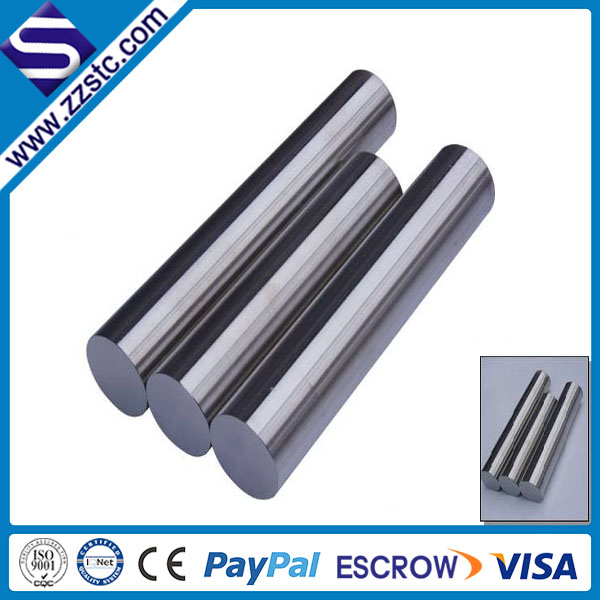Classification

The welding of titanium rod and titanium plate materials
Submitted by admin on 08/04/2016
The first thing we need to consider about the welding of titanium bars and titanium plates is its characteristics.
1.Classification and characteristics of titanium and titanium alloys
Domestic industrial pure titanium can be classified into TA1, TA2, TA3, the difference is that the impurity content of hydrogen oxygen nitrogen is not the same, these impurities make the industrial pure titanium strengthen,, but the plastic significantly reduce. Although the strength of industrial pure titanium is not high, the plastic and tolerance is excellent, especially the excellent low temperature impact resistance. Therefore, this kind of material is used in chemical industry, petroleum industry, etc., in fact, it is often used in the working conditions below 350 degrees. According to the condition of annealing of titanium alloy at room temperature,
titanium alloy can be divided into three types: alpha titanium alloy, α+β titanium alloy and beta titanium alloy. The more used alpha titanium alloy is TA4, TA5, TA6 type of Ti-AI series alloy, TA7 and TA8 type of Ti+AI+Sn alloy. At room temperature, its strength of this kind of alloy can reach 931N/mm2, and at high temperature (500℃below), its function is stable, which can be welded. The use of beta titanium alloy in China is small, and the range of its application needs to be further expanded.
2.The welding of titanium rod and titanium plate
The welding function of titanium rod and titanium plate has many remarkable characteristics, these welding characteristics are decided by titanium plate and titanium rod physical and chemical function.
Influence of gas and impurity contamination on welding function
At room temperature, titanium and titanium alloy is relatively stable. But in the welding process, the liquid droplet and molten pool metal have the effect of intense absorption of hydrogen, oxygen, nitrogen, and in the solid state, these gases have their effects. With the increase in temperature, the ability of titanium and titanium alloys absorbing hydrogen, oxygen, nitrogen can also be significantly increased, at about 250 degrees, it begins to absorb hydrogen, at 400 degrees, it begins to absorb oxygen and at 600 degrees, it begins to absorb nitrogen, after the gases being absorbed, it will lead to embrittlement of welded joints, which is the most important factor affecting the quality of welding.

1.Classification and characteristics of titanium and titanium alloys
Domestic industrial pure titanium can be classified into TA1, TA2, TA3, the difference is that the impurity content of hydrogen oxygen nitrogen is not the same, these impurities make the industrial pure titanium strengthen,, but the plastic significantly reduce. Although the strength of industrial pure titanium is not high, the plastic and tolerance is excellent, especially the excellent low temperature impact resistance. Therefore, this kind of material is used in chemical industry, petroleum industry, etc., in fact, it is often used in the working conditions below 350 degrees. According to the condition of annealing of titanium alloy at room temperature,
titanium alloy can be divided into three types: alpha titanium alloy, α+β titanium alloy and beta titanium alloy. The more used alpha titanium alloy is TA4, TA5, TA6 type of Ti-AI series alloy, TA7 and TA8 type of Ti+AI+Sn alloy. At room temperature, its strength of this kind of alloy can reach 931N/mm2, and at high temperature (500℃below), its function is stable, which can be welded. The use of beta titanium alloy in China is small, and the range of its application needs to be further expanded.
2.The welding of titanium rod and titanium plate
The welding function of titanium rod and titanium plate has many remarkable characteristics, these welding characteristics are decided by titanium plate and titanium rod physical and chemical function.
Influence of gas and impurity contamination on welding function
At room temperature, titanium and titanium alloy is relatively stable. But in the welding process, the liquid droplet and molten pool metal have the effect of intense absorption of hydrogen, oxygen, nitrogen, and in the solid state, these gases have their effects. With the increase in temperature, the ability of titanium and titanium alloys absorbing hydrogen, oxygen, nitrogen can also be significantly increased, at about 250 degrees, it begins to absorb hydrogen, at 400 degrees, it begins to absorb oxygen and at 600 degrees, it begins to absorb nitrogen, after the gases being absorbed, it will lead to embrittlement of welded joints, which is the most important factor affecting the quality of welding.

------分隔线----------------------------




